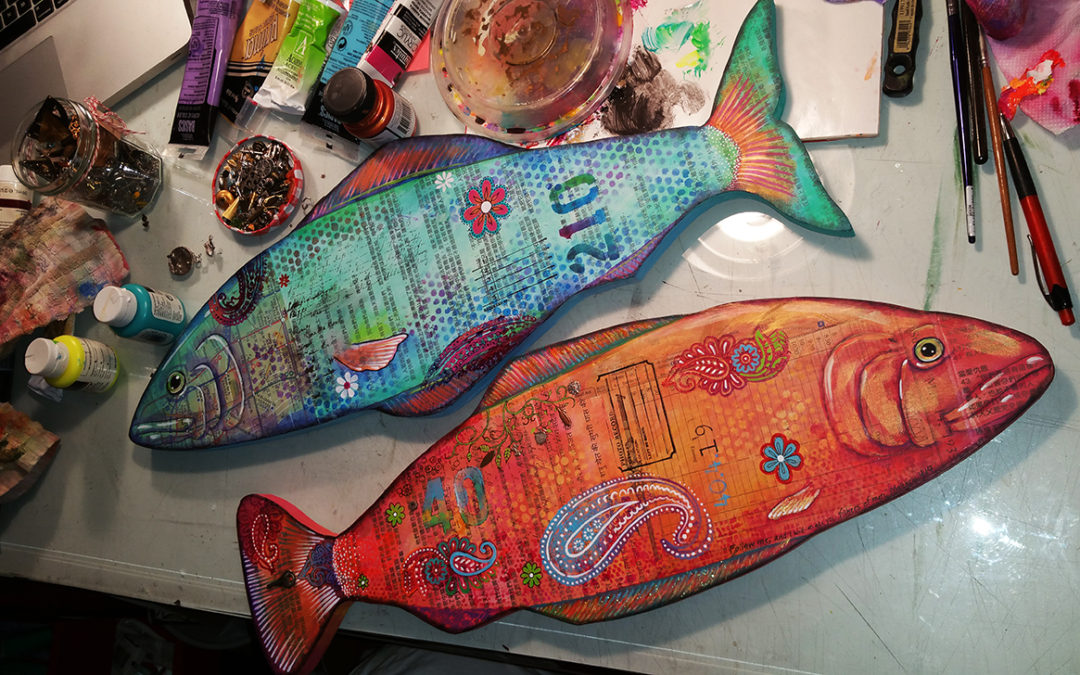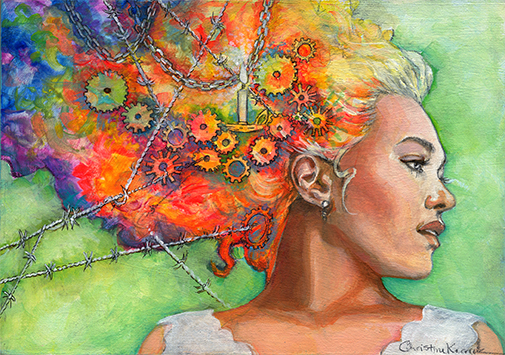When I was in school, I thought the only artist job out there was that of an architect. In art school I found out how wrong I was. Going on in time, as technology has matured, new art jobs have come up. There are also new ways of selling your art. Here is a list of jobs you may want to consider, whether you’re just entering college, about to finish, or thinking of changing career paths. It is in no particular order:
- Illustrator. While the illustration market has changed, and many agencies and publications opt for stock photo and stock illustration, there is still a need for illustrators in publishing (books and magazines), ad agencies, private corporations, entertainment, medical companies and more.
- Forensic Artist. If you’re not afraid of working with crime victims, witnesses or dead people, this may be an avenue. It is helpful to get specific training in forensic art, as it is different from commercial illustration. But in doing so, you may be able to help families find or identify loved ones, and assist police in their cases.
- Technical artist. Those ‘how-to’ manuals for toys, baby strollers and furniture don’t make themselves. People need to know how to put things together. As a technical illustrator, you can help them. Illustration knowledge and experience with Adobe Illustrator are musts.
- Web designer. This job is in high demand. Almost everyone needs a web site. If you can do it quickly, with logical navigation and with cutting-edge design sense, you will have a good career ahead of you.
- Photographer. This art can take you anywhere. Literally. Here are some things photographers do: weddings, family portraits, corporate portraits, travel (just like it sounds; you get to travel at a client’s expense, or, pay your own way and sell your photos afterwards), product photography, photos for people’s web sites or sale items (ebay, for example), school photography, celebrities, journalism, and stock photography.
- Graphic designer. This path is wide open. You can be on payroll at a company, or be freelance. Designers create corporate identities, flyers, catalogs, postcards and other printed materials for publishing, hospitality (hotels) , law enforcement (police, sheriff and community information), entertainment, private and public corporations, small businesses, schools and more. They also create logos and brands for companies and private people.
- Fashion designer. With the internet and self-publishing, it is easier for designers to make clothing, shoes and anything else fashion themselves, promote it and sell.
- Textile design. Ever wonder who does those patterns on fabric? Artists do.
- Storyboard artist. This artist helps visually plot out, well, a film plot.
- Medical illustrator. This realistic artist creates detailed anatomical and other medical art to educate health care professionals, students and patients.
- Architect. Yes, architects use art to create structures for public and private use. There is an incredible amount of work, personnel and other consideration that goes into a project, but it is rewarding to see your art take on a large and beautiful form for people to use.
- Mural artists. These artists get to paint legally on walls, buildings and in interiors, their work seen by passers-by and traffic for years to come. Search ‘Philadelphia Mural Arts’ for some samples of amazing mural work. There is even a mural tour in Philadelphia.
- Tattoo artist. This art can be designed by you and executed by another, or designed and executed by the same artist. There is no limit to the kind of art a tattoo designer or artist can do. Check it out by visiting a tattoo convention. Conventions will give you loads of education and contacts.
- Comic book artist. And speaking of conventions, the comic book artist invented the convention, as far as artists go. Comic artists come in many capacities: writer (yes, that is an art), penciller (illustrates the vision of the writer), inker (inks the pencils), colorist (either digitally or hand-colors the penciller’s or inker’s work), graphic designer (puts it all together). A comic book artist can work on his own, self-publishing, can work for a ‘big guy’ like Marvel or DC, or can sell publish their own story with an independent label (something more than a few bigger independents look for). Advice for comic artists: carry your sketchbook ALWAYS, and draw in it; go to conventions armed with a business card or post card and, if possible, a copyrighted copy of your book (even if you have to print a few out at Kinko’s) and art, ready for one of the portfolio reviews (you have to sign up ahead of time, usually). Be professional in dress and art presentation. I’ll have another full blog on this. More advice: get good at drawing the human figure, even if you’re going to be a colorist. Draw, draw, draw.
There are lots of different types of jobs as an artist. In a future blog, I will be talking about WAYS of selling your art, aside from an ‘office’ job, and how to market yourself.


